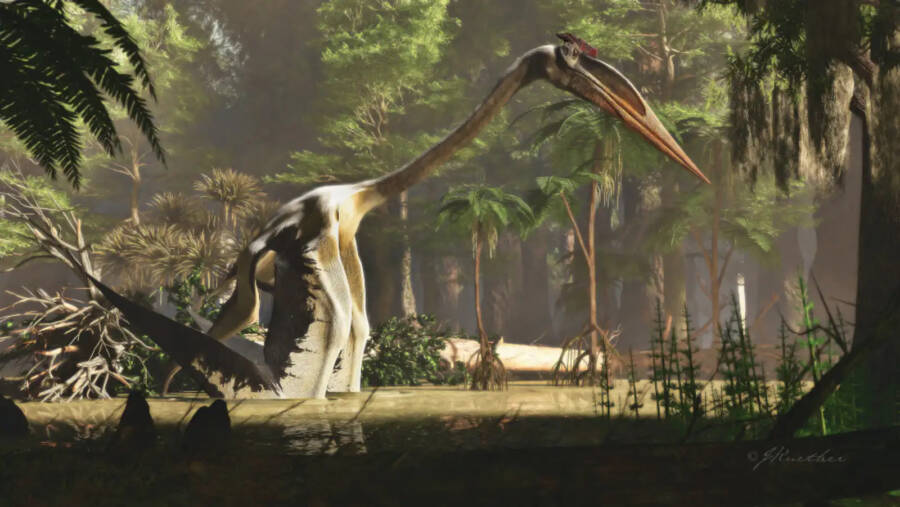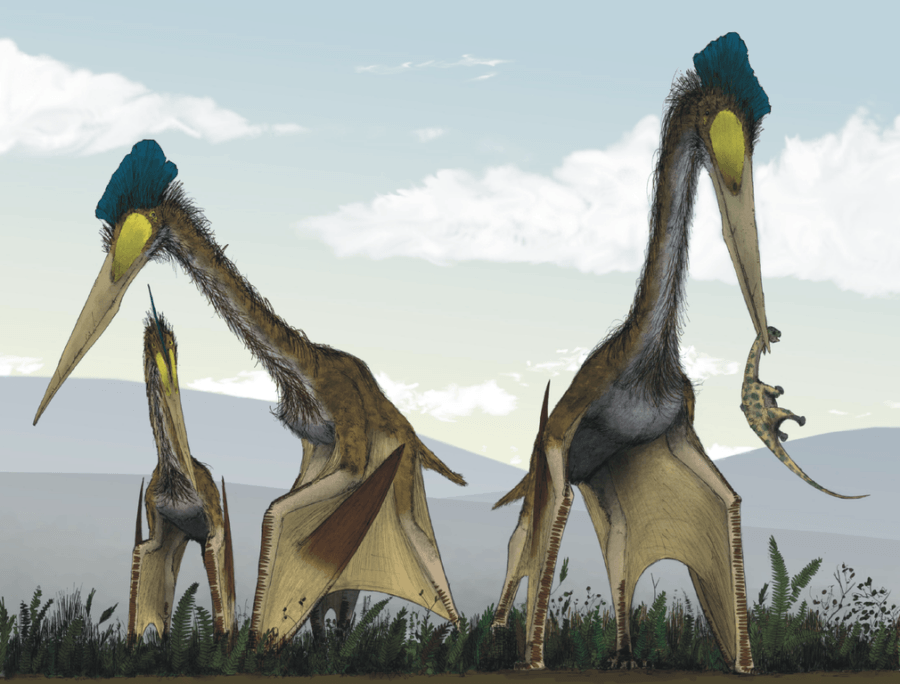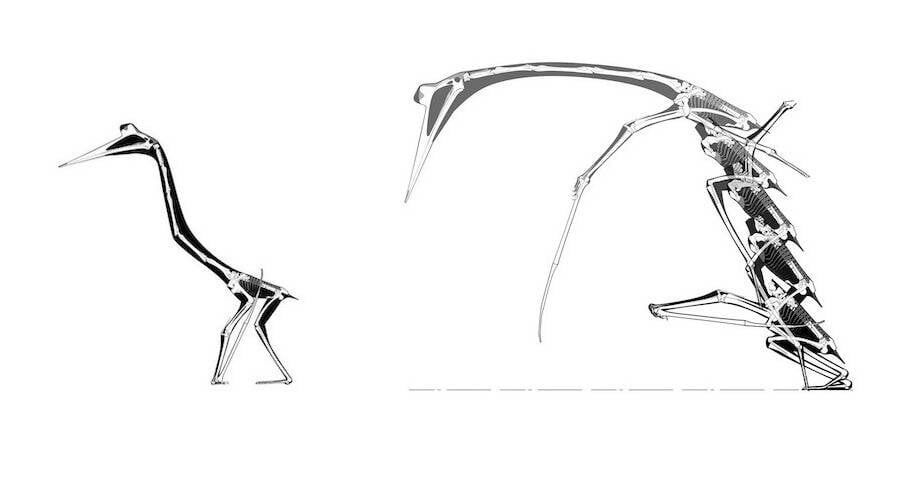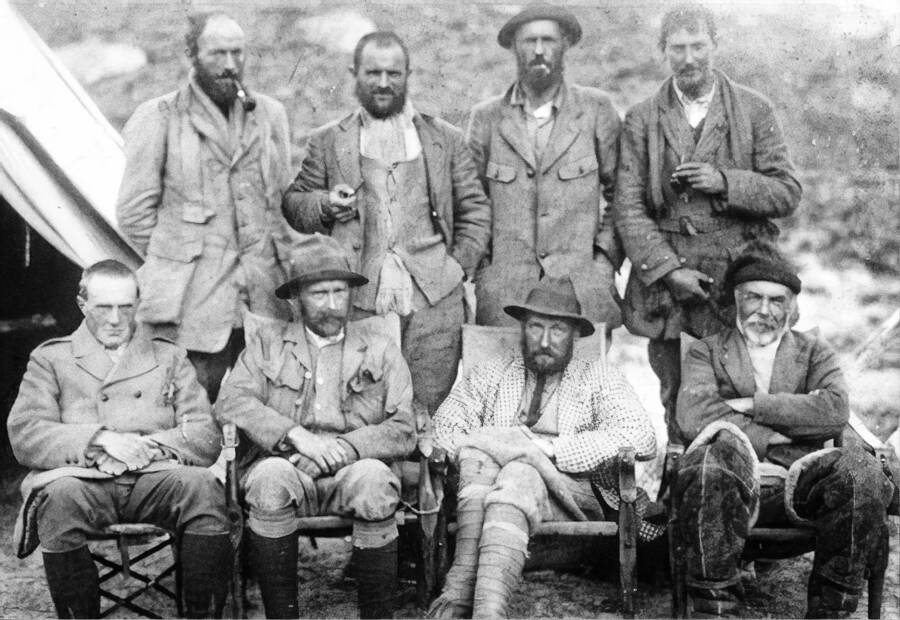
Since its discovery in the 1970s, Quetzalcoatlus has remained an enigma, captivating scientists with its massive wingspan of 40 feet. Belonging to the ancient pterosaur group, its fossilized remains puzzled researchers for decades regarding its ability to take flight — until now.
Previously, theories speculated that this colossal creature may have utilized bat-like rocking motions or albatross-like running to initiate flight. However, a recent study published in the Journal of Vertebrate Paleontology has shed new light on this ancient mystery.
The Unveiling of Quetzalcoatlus, the Largest Flying Dinosaur of All Time

Quetzalcoatlus, formally known as Quetzalcoatlus northropi, belonged to the Azhdarchidae family of toothless pterosaurs with elongated necks. Despite its prominence during the Late Cretaceous period roughly 70 million years ago, its fossils were only unearthed in 1971.
Discovered by Douglas Lawson, a geology graduate student at the University of Texas at Austin, the first bone was found at Big Bend National Park in Brewster County, Texas. The genus name, inspired by the Aztec feathered serpent god Quetzalcoatl, was paired with “northropi” in honor of aircraft pioneer John Northrop.
According to the Carnegie Museum of Natural History, Quetzalcoatlus northropi boasted a wingspan equivalent to an average city bus and featured hollow bones, a characteristic common among pterosaurs to facilitate flight.
However, while its fossils have been meticulously preserved at the University of Texas at Austin, excavations have been slow due to the delicate nature of the potato chip-like bones found within hard rock.
A New Era of Discovery

This year marked a significant milestone as a new generation of researchers embarked on a comprehensive review of the fossils. In a monograph comprising five papers, scientists sought to definitively prove Quetzalcoatlus’ flight capabilities and unravel the mechanics behind it.
Although not classified as a dinosaur, Quetzalcoatlus’ coexistence with these ancient creatures has long intrigued scientists like Kevin Padian, a co-author of the study and paleontologist at the University of California, Berkeley. This research promises to revolutionize our understanding of pterosaurs, the first vertebrates after insects to evolve flight.
How Quetzalcoatlus Ascended the Skies Despite Its Gigantic Size

The newly released monograph delves into various aspects of Quetzalcoatlus’ existence, including its initial discovery, habitat, physical traits, and taxonomy. Through meticulous analysis, researchers uncovered surprising revelations about its flight capabilities.
Contrary to previous theories, Quetzalcoatlus did not rely on bat-like rocking or albatross-like running to initiate flight. Instead, scientists discovered that it employed an astounding leap of eight feet straight into the air, followed by vigorous flapping of its colossal wings to soar away.
Furthermore, the study identified two previously unknown pterosaur species, shedding light on the evolutionary diversity within this ancient lineage.
As researchers continue to unravel the mysteries of Quetzalcoatlus, its legacy as the largest flying dinosaur stands as a testament to the marvels of prehistoric life.
Hot news:
News
Se desarrolla el escándalo, se revela la identidad: modelo de Instagram, captada en fotos picantes en la playa con el boxeador comprometido Ryan García, envía ondas de choque a través de las redes sociales
Ryan García, realmente, tiene algo que explicarle a su futura esposa. García fue visto en Miami celebrando su victoria sobre Devin Haney con una mujer misteriosa. No solo fue visto con ella, sino que también se le vio tomándola de…
‘Soy el mejor’ – Canelo Álvarez escribe en su diario mientras logra una impresionante caída sobre Jaime Munguía
Canelo Alvarez demostró que sigue siendo el mejor supermediano del planeta contra Jaime Munguía el sábado por la noche. El de 33 años retuvo su corona indiscutible de 168 libras el sábado por la noche a través de una decisión…
Luis Nery sabe que debe ser un villano en Fan de Naoya Inoue: ‘Soy el malo’
“Digan que soy el malo,” dijo un Luis Nery impasible, la noche antes de enfrentarse a Naoya Inoue en el Tokyo Dome. Nery es el villano de la historia aquí, prohibido en Japón pero traído de vuelta para cumplir penitencia…
He aquí, el monstruo despierta!
Se le llama el “Monstruo”, pero Naoya Inoue parece que podría ser un héroe de cómic para niños o estar en una banda de chicos. Tiene un rostro angelical, un destello de color claro en su cabello oscuro, y puede…
Tyson Fury envía con confianza un mensaje de dos palabras antes de la pelea con Oleksandr Usyk después del aterrizaje en Arabia Saudita
Tyson Fury ha llegado a Arabia Saudita antes de su pelea de peso pesado con Oleksandr Usyk a finales de este mes. Los dos pesos pesados pelearán en Riyadh el sábado 18 de mayo por la oportunidad de ganar los…
Los elogios poco sinceros de Tyson Fury se perciben como un intento de manipulación: muy poco, demasiado tarde
Vídeo al final de la noticia El campeón peso pesado del Consejo Mundial de Boxeo (CMB), Tyson Fury, ha cambiado de tono al elogiar al campeón de la IBF/WBA/WBO, Oleksandr Usyk, antes de su pelea el 18 de mayo en…
End of content
No more pages to load















